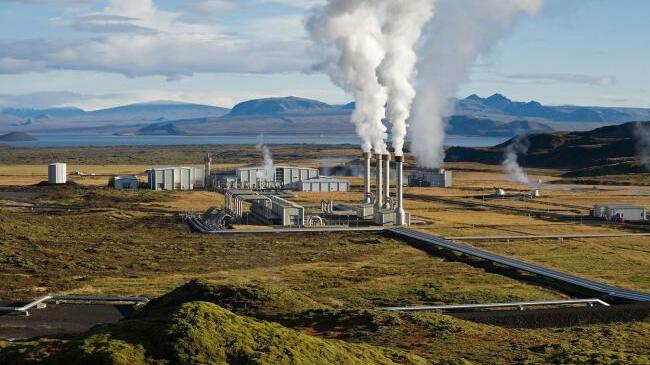 Energy Infrastructure
Energy InfrastructureBusiness Practices
The possibilities and limitations of Geothermal energy
Summary
Turning to alternative and renewable sources of energy is one way to secure the stability of our planet, while fulfilling human energy needs. Geothermal energy harnesses the pockets of steam, hot water, and rock beneath the Earths surface to generate electricity and power heating/cooling systems. The amount of emissions from geothermal energy extraction is still significantly lower than that of fossil fuels. geothermal power plants emit produce, 97% less acid rain-causing sulfur compounds and about 99% less carbon dioxide than fossil fuel power plants of similar size. The Office of Energy Efficiency and Renewable Energy predicts that a massive
that a massive chunk of geothermal electricity in the future will come from binary plants. Another limitation of Geothermal energy is the initial cost required for geothermal exploration. It is not flawless, but it must be recognized that it makes for a much better alternative to the fossil fuel-supported course we currently find ourselves on our planet. the future.
Open full article
The possibilities and limitations of Geothermal energy
You’d think that in today’s world, the average Joe doesn’t need much more convincing that renewables are the future of energy. It’s no secret that the fossil fuels we currently use to fuel our modern lifestyles are largely contributing to climate change, through increased exponentially increased emissions. What’s more, fossil fuels aren’t an unlimited source of energy and can easily run out as the demand for energy rises. Turning to alternative and renewable sources of energy is one way to secure the stability of our planet, while also fulfilling human energy needs.
In this regard, geothermal energy is one of many alternative sources of energy that harnesses the pockets of steam, hot water, and rock beneath the Earth’s surface to generate electricity and power heating/cooling systems. As with most things, geothermal energy has its own set of benefits and limitations. Here, we take a look at some of its duplicities:
Pros
The most obvious, surface-level advantages of geothermal energy include its constant availability, environmental friendliness, and its relatively low cost. When compared to other sources of renewable energy, like wind and solar power, geothermal energy makes for the most reliable option. Wind doesn’t blow every day, and the sun isn’t always shining — but the heat under the Earth’s surface is available virtually anytime. Since it can be extracted without burning fossil fuels, geothermal energy is also more eco-friendly, resulting in lower emissions. According to the U.S. Energy Information Administration, geothermal power plants emit produce, “97% less acid rain-causing sulfur compounds and about 99% less carbon dioxide than fossil fuel power plants of similar size.
In terms of expenditure, direct use of geothermal energy can save as much as 80%when compared to fossil fuels. In fact, geothermal energy is recognized as the world’s greenest heating/cooling system, with geothermal heat pumps providing a much more efficient and cost-effective alternative than conventional residential systems. Today, research shows that “up to 95% of geothermal system owners would recommend installing such a system in the home.”
Much like the nature of geothermal energy, its advantages go a bit deeper. Not only is geothermal energy already established as a source of sustainable power, but it also has benefits in terms of job creation. Only workers with adequate training can properly harness the power of geothermal energy. Renewable energy engineers are thus in great demand, ranging from the need for more chemical and electrical engineers to mechanical and industrial engineers.
Cons
Even though it would be ideal if geothermal energy came with no strings attached, this isn’t the case. One major concern around geothermal energy, as articulated by GreenMatch, is in regards to its extraction — often, the extraction of geothermal energy “leads to a release of greenhouse gases like hydrogen sulfide, carbon dioxide, methane and ammonia.” While this shouldn’t be ignored, it is worth noting that the amount of emissions from geothermal energy extraction is still significantly lower than that of fossil fuels.
Scientists have acknowledged this and taken steps to find a viable solution in the form of a binary plant — a geothermal plant that passes hot water by a secondary fluid with a much lower boiling point, This causes the secondary fluid to turn to vapor and turn the turbines for extraction, resulting in virtually no emissions through the process. The Office of Energy Efficiency and Renewable Energy predicts that a massive chunk of geothermal electricity in the future will come from binary plants.
Another limitation of geothermal energy is the initial cost required for geothermal exploration. While geothermal energy has the potential to save money in the long run, the initial capital needed to build a plant and harness it can be quite prohibiting in nature. This, paired with the lack of government buy-in makes for a pretty big hurdle to overcome. For instance, both Texas (USA) and Chile have been identified as potential areas in which geothermal energy would be very advantageous, but these opportunities have not been capitalized upon due to the aforementioned obstacles.
However, as illustrated by Greenmatch, if governments were to buy into geothermal energy as is with the case of Iceland — where almost the entire country runs on it - this obstacle could be overcome. The US government has recently chosen to take a page out of Iceland’s book, by agreeing to set aside a significant amount of funding towards geothermal exploratory research. This is a small step, but definitely one in the right direction.
The Way Forward
There’s no doubt that geothermal energy shows a lot of promise for our common future. Yes, it does come with limitations, but so far, these are outweighed by its benefits. While geothermal energy isn’t flawless, it must be recognized that it makes for a much better alternative to the fossil fuel-supported course we currently find ourselves on.
Author: Indiana Lee
This article appeared previously on Energy Central.



